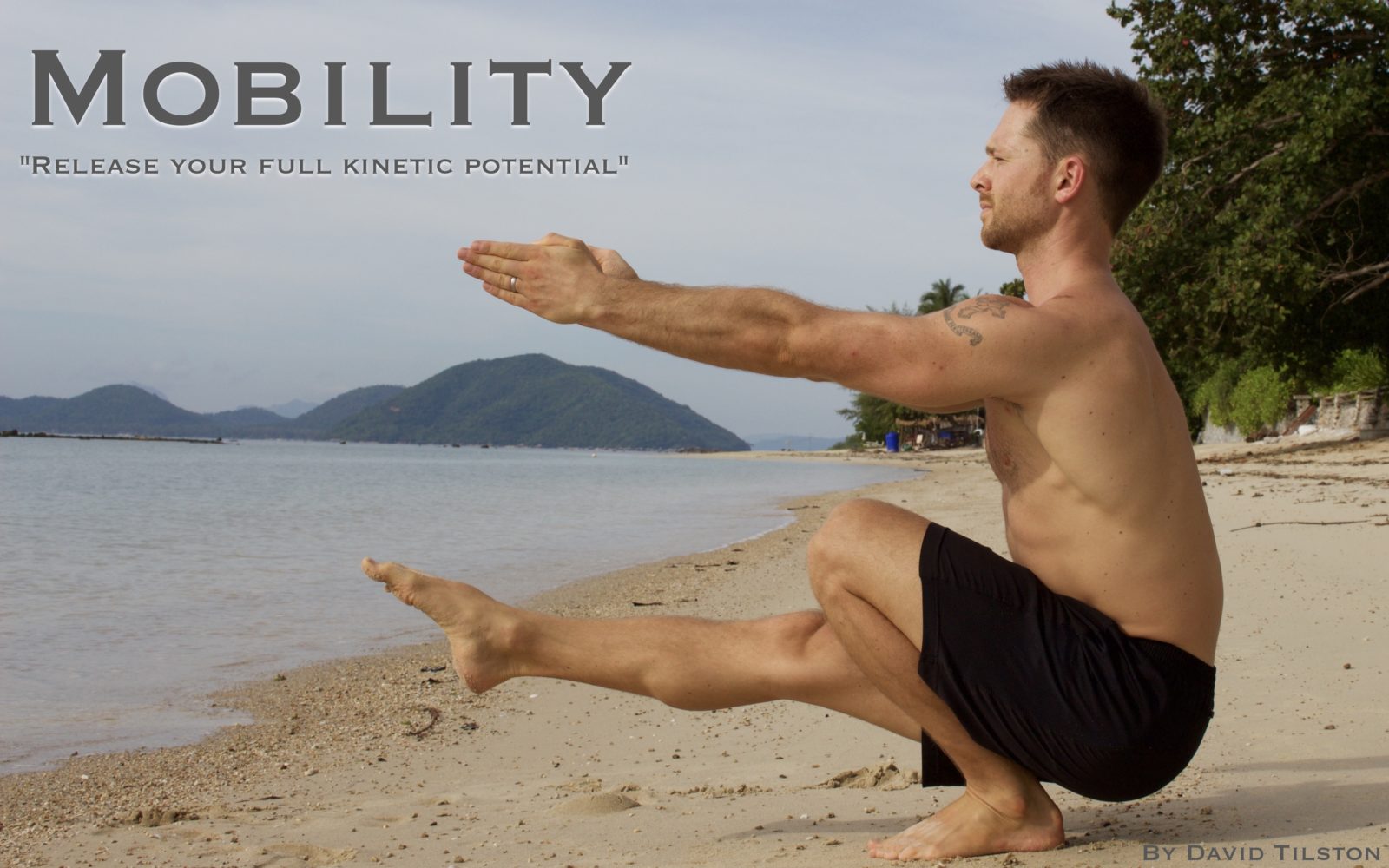Training
Mobility for Martial arts
Mobility for Martial arts ‘’Release your full kinetic potential” By David Tilston
What you repeatedly do you become! So if you sit at a desk all day and do not move then you become an immobile chair. Injury is then more likely to occur due to shortened muscles, instability, lack of core strength and an inability to activate essential stabilizers that form our base and hold us upright.
Why is this applicable to martial arts? …If you cannot move out the way of a strike, you are going to get hurt!
Quite often we get carried away with the millions of techniques that ‘could’ be done standing still. In all aspects of martial arts we must “BE REAL” – this does not matter what system or style you follow, as the principle remains the same. The answer lies in the fact that – if you are not there you are not going to get hit!
The other way we can look at this is that you have been placed in an arm bar; if you are mobile at the shoulder there is a high chance you will be able to escape the lock. The other possibility is that you haven’t done any mobility for years but have continued to punch boards and bags, lift weights in a linear isolated fashion etc, as soon as a lock gets place on, you can’t move. Now you are going to get hurt!
There is a reason that so many sportsmen and women now utilize yoga asana and mobility, so they are able to perform at the top of their sport for longer. These practices also promote stability at our base which is basically our root system.
Let’s focus on a set of principles that we regularly draw awareness to within Filipino Kyusho as well as many other arts: Absorb Deflect and Project.
Imagine someone jumping on a trampoline …
1 … As they land the springs lengthens to absorb the load – (absorption) this is what your body needs to do, create space to be able to move! The springs need to be mobile and flexible in order to absorb the mass of the user. If there is no ‘give’ it will be like landing on concrete floor. If we get a punch thrown at us we need to move to start with (it sounds obvious but can often get forgotten about!). The absorption occurs at the first touch and ‘linking’ of energies. Mobility is required to move and trace the strike to monitor but not alert the attacker.
2. Now there is a transition phase where the deflection happens and this can be on a tiny scale. The point is that the direction of travel must change before the energy is directed elsewhere using spherical motions – tight tissues struggle with circles and spirals!
3. The projection is seen in the ability to send the energy away from the deflection and can be seen on a trampoline by the user flying upwards. From a martial arts perspective it can be seen in the energy of the opponent being used against them as well as a possible strike.
“The more mobile you are the greater the ability you have to blend with energy rather than stopping it due to the tension you hold within your own body. “
How do you make yourself more mobile?
Practice balancing on one leg, then try turning your head left and right. If this is easy try tipping your head back. Still too easy? … Try closing your eyes.
Why? … The reason for this is to build stability in the body and switch on the nervous system. When we practice balancing and working on stability we prevent injury by alerting the nervous system to the body’s capabilities. This is very important prior to mobilizing the body so we can feel micro adjustments and not push our body past our limits potentially causing injury.
Wake up and start to move your body gradually; think circles and spirals working from the neck down drawing awareness to each joint and limb of the body.
Stay hydrated throughout the day aiming to drink at least 4 pints of water per day. We are primarily water and our bodies work far better when we have taken on adequate fluid.
Consider attending a weekly yoga class as this will help to assist you in becoming more mobile, stable, and aware of your body and breathe and help to assist with focus to your practice and fundamentally your life.
Avoid relying on a chair to hold you up. Have a walk or stretch when possible and try to hold your body up using your core by keeping your back off the back of the chair. This adjustment will help to work key postural muscles within the core, which will ultimately benefit your posture long-term.
Try implementing the above into your daily life and start to see how being mobile will help to release your ‘full kinetic potential’.
I will leave you with the words of Bruce Lee –
“Notice that the stiffest tree is the most easily cracked, while the bamboo or willow survives by bending in the wind.”

